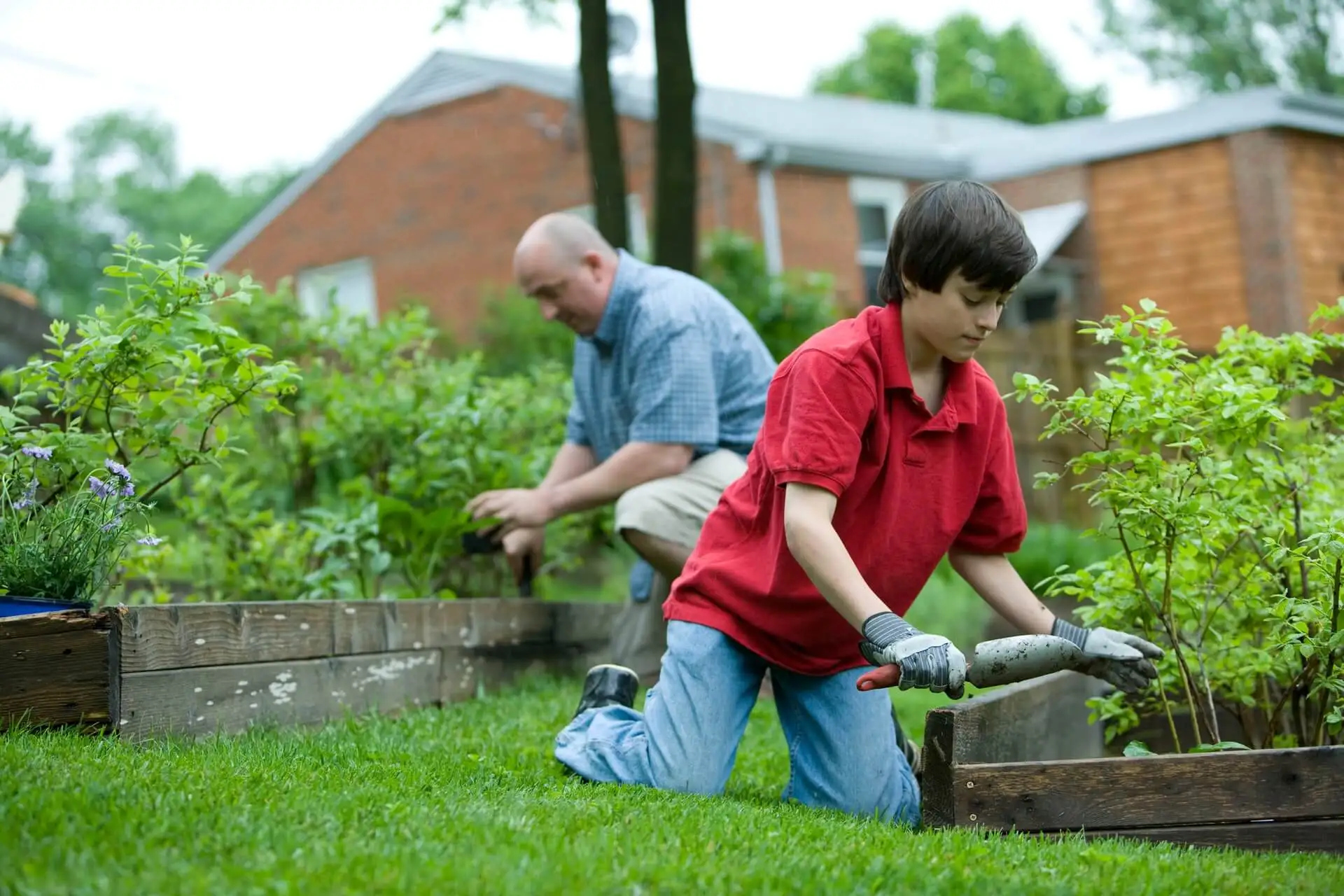Do You Know What a Slow Gardening Is?

The concept of a slow gardening doesn’t tell you a lot about its true essence, which goes beyond what you can or should do regarding plant care.
In this respect, it means that this movement or trend constitutes a whole philosophy of life, which has to do not only with pruning, watering and transplanting. Of course, in order to transcend from one thing to the other, you must follow certain principles. Read on and we will tell you more about slow gardening.
What is “slow gardening”?
Slow gardening was initiated by Felder Rushing, an American horticulturist, who wrote several books on this and related topics. He also has his own blog, where he gives advice on plants and crops.
This movement draws inspiration from the slow food movement, with which it shares some principles, which are common to what is now called, generally speaking, slow life. This approach seeks to reverse or combat the natural propensity to hurry, so accentuated in the Western world.
Thus, it is advocated that we should at all times give ourselves the necessary time to enjoy the things we like and be aware of who we are, where we are and what we do. And this encompasses the various facets of our lives, from getting dressed and reading slowly, to decorating the house with total calm and traveling step by step.
Plants for a slow gardening
In the case of plants, slow gardening is also considered a philosophical or life approach, oriented towards the same ends. Therefore, it is encouraged to put all the attention and senses in what is done in the garden.
It is appropriate to clarify that its principles can be applied to any type of crops: large trees, flowering shrubs, vegetables, fruit plants, even lawns and bonsai. The idea is not only to cultivate or have a garden, but to enjoy each task, respecting its lapses and valuing that quality time we spend outdoors.
Therefore, in slow gardening we do not think so much about the visual aspect or the result that will be appreciated at the end, once we finish the work. The idea is to focus on the process rather than the product.
In short, understand that all things take time to mature. And one of the best ways to know this is to plant a seed, water it, watch it grow, little by little, every day, until it becomes a bush or a tree, big and strong.
Read The Slow Life: Get to Know this Lifestyle and Learn How to Live it
Benefits of slow gardening
With the slow gardening movement, it seeks to restore or strengthen our connection with nature, while giving us a chance to enjoy a moment of solace and the beauty of plants.
There are other benefits to slow gardening:
- The person can plant his own vegetables and fruits. This ensures organic and healthier crops without pesticides.
- In general, gardening brings health benefits such as reducing stress. More, if you cultivate calmly.
- Slow gardening is an activity that in a particular way helps us to be fully aware of what we are doing. It also allows us to reconnect with ourselves and our environment.
- It fosters sensitivity to biodiversity.
- Furthermore, it teaches us to be responsible with what we do and with other living beings. In this case, the plants, insects and birds that come to the garden.
- According to research by the University of South Bohemia, slow gardening helps reduce industrialized farming, as well as the use of toxic products and means of transporting food, even on a small scale.
- In another study conducted in Sweden, the results show that slow flower, a movement akin to slow gardening, brings sustainable values. It even contributes to local culture and landscaping.

Read Slow Deco: Learn What It Is and How to Apply It To Your Home
How to grow a slow garden?
It is important to clarify that slow gardening does not mean remodeling or totally changing the garden. Nor is there any need to do anything too elaborate.
A few plants, something small, could help achieve the goal: focus on the here and now. Let’s take a look at some other tips
Patience is the key
It’s all about small changes in the way the work is done. Therefore, the first recommendation Felder Rushing gives in his book is not to transfer daily stress to the garden, but to exercise patience.
Respect the times
Each crop has its ideal time. We must know this and see how the plants grow gradually. We should not try to accelerate the process with fertilizers.
On the other hand, by planting different species according to each season, these will develop in a healthy way. The best thing is that we will be able to enjoy a garden with plants that bloom all year round.
Plant varieties
You can include several types of plants in the slow gardening:
- Ornamental plants, which are attractive to the eye.
- Also include flowering or other aromatic species.
- Shade trees: the size of these will depend on the garden area available.
- Edible vegetables: basil, peppers, among others, that can complement our meals.
Use native species in your slow gardening
These are suitable for slow gardening. Not only are they more resistant, since they belong to a given climate, but we will avoid falling into the pressure of trying to make species that are not native to the area prosper at all costs.
Natural fertilizers
Instead of chemical products, we can prepare our own organic fertilizers. To do this, we will use the remains of fruits and vegetables, coffee, eggshells. All we need is a wooden box to deposit the natural waste we generate.
Use manual tools in your slow gardening
No pruners or electric saws or blowers for fallen leaves. In slow gardening we should use manual tools that are silent.
This will reinforce the idea that you should take it easy on everything. Also, the hoe and rake will help us get a little more exercise.

Wildlife
A garden is even more beautiful when wildlife abounds. But to attract pollinating animals (birds, ladybugs, butterflies and bees), not only do we need flowering plants, but we can also add some food and even small spaces to provide habitat for these species.
Slow gardening requires sustained work
The last piece of advice Felder Rushing gives is that being slow is not being lazy. We have to work continuously, albeit at our own pace and at our own capacity. The good thing is that this also involves being in the garden.
Slow gardening for enjoyment
Doing slow gardening work means, among other things, doing something with our own hands and in accordance with our own expectations and needs. Thus, there is no single rule as to what we can include.
The only thing we should be clear about is that we should enjoy the process, as well as the aromas and colors. We can incorporate, then, many species with flowers, as well as different elements: a bench, a fountain, a waterfall, walkways, always respecting the space of the plants.
All this, together, will help us to enjoy the time we are there, away from other matters. Of course, we must forget about electronic devices when we go to our garden; otherwise, what is the point?
All cited sources were thoroughly reviewed by our team to ensure their quality, reliability, currency, and validity. The bibliography of this article was considered reliable and of academic or scientific accuracy.
- Love , J. (2012). Reading fast and slow: The speed at which our eyes travel across the printed page has serious (and surprising) implications for the way we make sense of words. The American Scholar – JSTOR, vol. 81(2). Disponible: https://www.jstor.org/stable/41435187
- Rushing, F. (2011). Slow gardening: a no-stress philosophy for all senses and all seasons. Vermont-USA, Chelsea Green Publishing Company.
- Šitnerová, S. (2017). Sociedad acelerada y movimiento lento. Budějovice- República Checa: Universidad de Bohemia del Sur České.
- Thörning, R., Ahlklo, A., & Spendrup, S. (2022). The slow flower movement – exploring alternative sustainable cut-flower production in a swedish context. Heliyon, Volume 8(10), e11086.
- Tranter, P. & Tolley, R. (2020). Slow Cities: conquering our speed addiction for health and sustainability. Amsterdam -Netherlands, Elsevier.
- Tranter, P. & Tolley, R. (2020). Introduction: changing cultures of speed (3–37). Slow Cities. doi: 10.1016/B978-0-12-815316-1.00001-0.
This text is provided for informational purposes only and does not replace consultation with a professional. If in doubt, consult your specialist.








